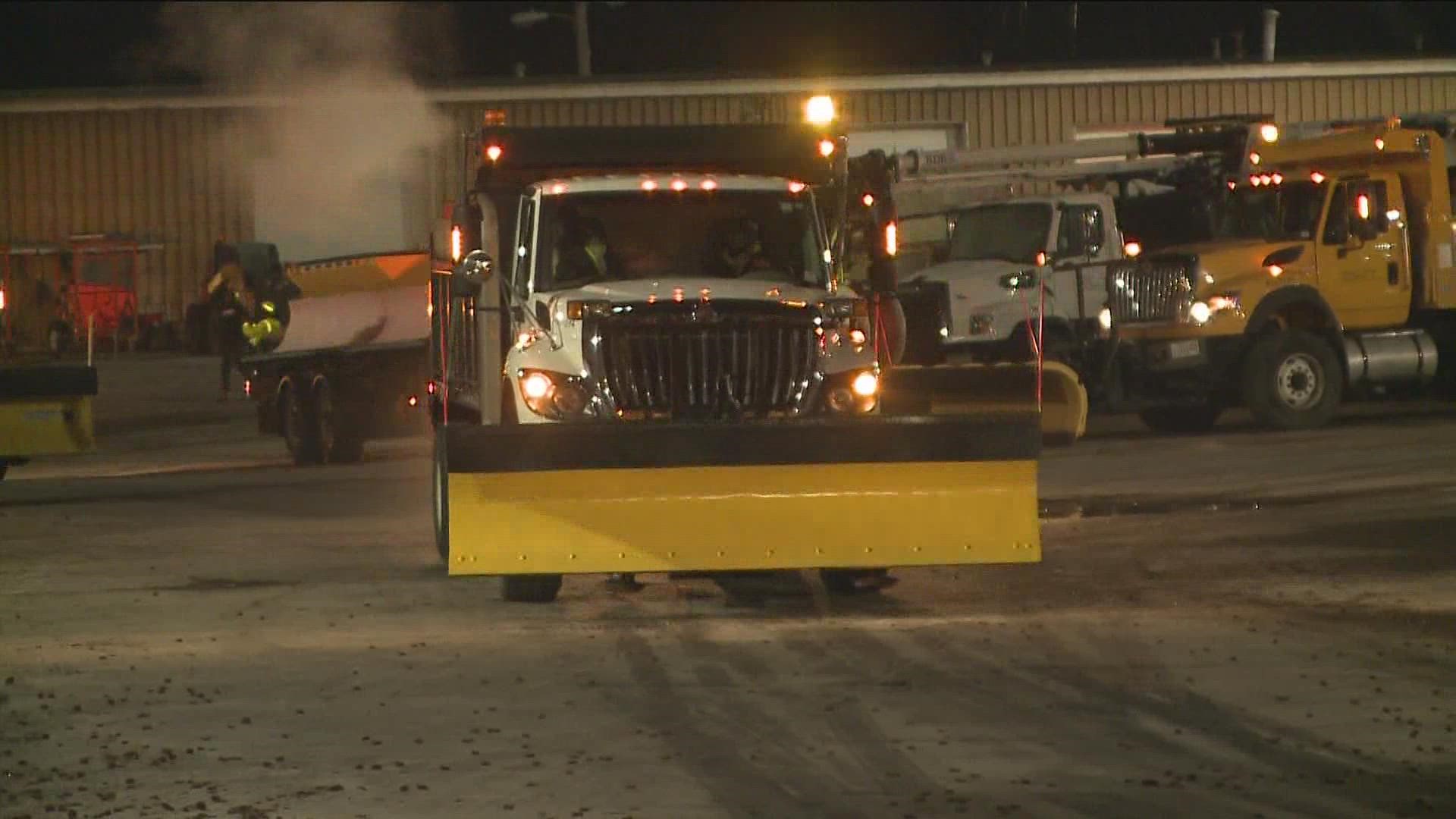ATLANTA — The possibility of winter weather hitting metro Atlanta and north Georgia this weekend has the Georgia Department of Transportation busy preparing its operations.
GDOT said it has its equipment and staff ready to respond to the pending threat of snow and ice that could impact thousands of miles of interstates and routes across Georgia Sunday.
Additionally, GDOT said it's also bringing in more crews and equipment from south Georgia to help with the response.
"We are monitoring the storm closely and adjusting response plans as needed. As the forecast has evolved, it has become more likely that a significant area of Georgia will experience icy conditions as part of the incoming storm system. Ice adds a level of complexity, as well as increased danger, for our crews and motorists," Georgia DOT Commissioner Russell McMurry said. “We anticipate downed trees, limbs and powerlines. It is critical that motorists take this storm system very seriously and stay off the roads through the end of the event to give our crews the space needed to work."
GDOT said it will begin brine treatments on the roads in affected areas starting Friday morning and will continue to work through Saturday, and into Sunday depending on the freezing rain, ice, sleet and snow conditions.
Crews will also prioritize and monitor interstates, state routes, bridges and overpasses, according to GDOT. Depending on road conditions, GDOT said it will brine, as well as use salt and gravel as needed.
GDOT also asked drivers to give its crews plenty of space on the road for crews to work safely. GDOT said its brine trucks will need to travel at 40 mph to properly apply the treatment on roads and interstates.
"As the impacts from the storm become reality through the weekend, it will become vitally important that motorists avoid all unnecessary travel in these areas," GDOT said in a release.
“Ice is something that’s incredibly hard to deal with," GDOT spokesperson Natalie Dale said.
That's something people learned firsthand during the 2014 winter storm, which crippled the Atlanta area and stranded drivers on roads for hours. GDOT said a lot has changed since then.
“Technology has changed," Dale said. "We have road weather information sensors that I know you guys look at just like we do. It tells you what the surface temperature is just because the air out here is 32. That doesn't mean the road is 32 degrees, the roads hold heat much longer, especially when we have days like today where we're going to get higher temperatures that's going to warm those roads."
More brine is ready to go to prevent snow and ice from building on roads.
“We had 70,000 gallons of brine that we were very proud of," Dale said. "Today, we have 1.2 million gallons of brine ready to go right now.“
That brine will be put to use with crews layering it on roadways.
“We will follow this first layer of brine pretreatment up with harder materials straight rock salt that will then that rain will turn into a another layer of brine, and get a higher salinity count helping us to keep that ice off the road as soon as much as possible," Dale said.

